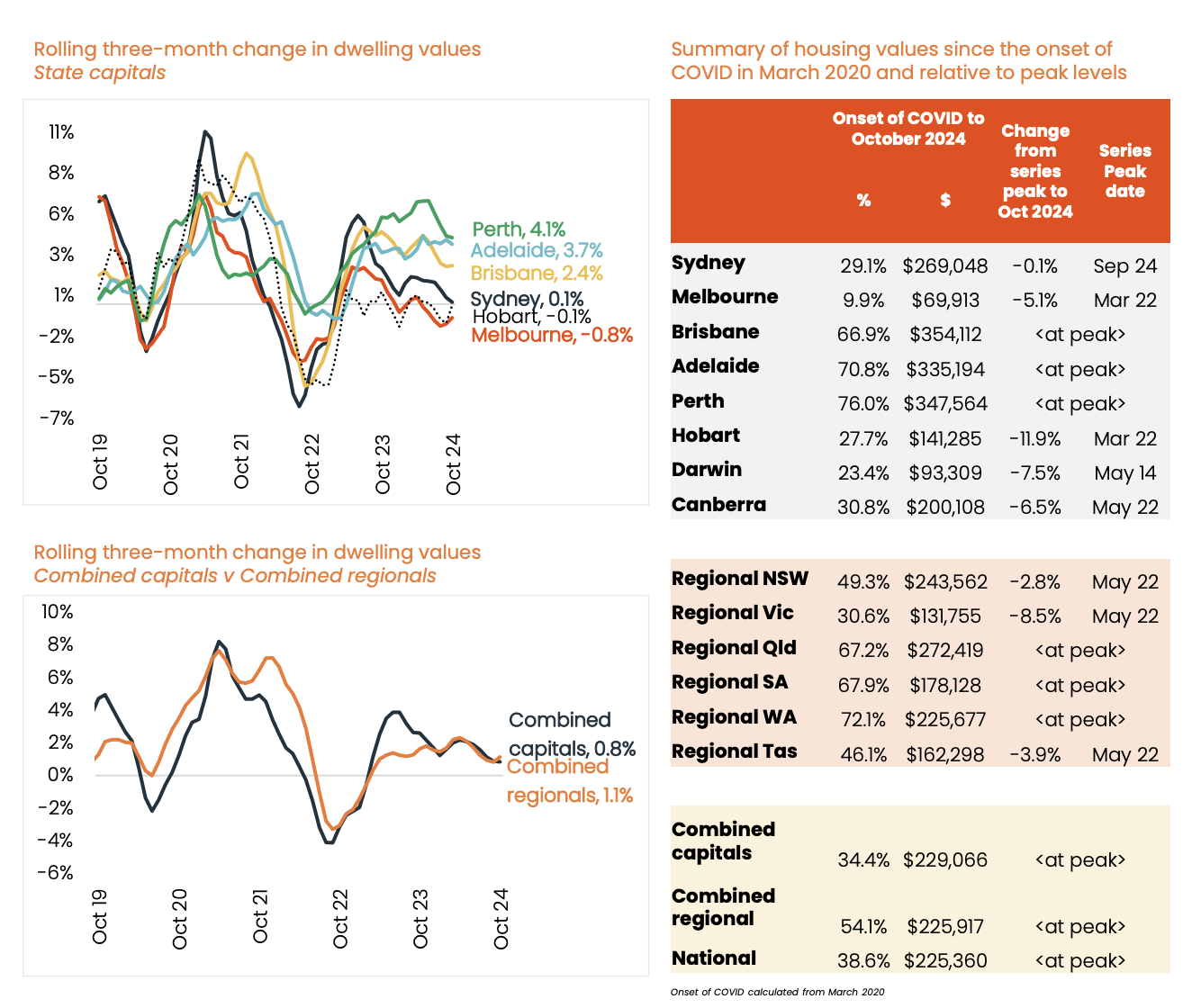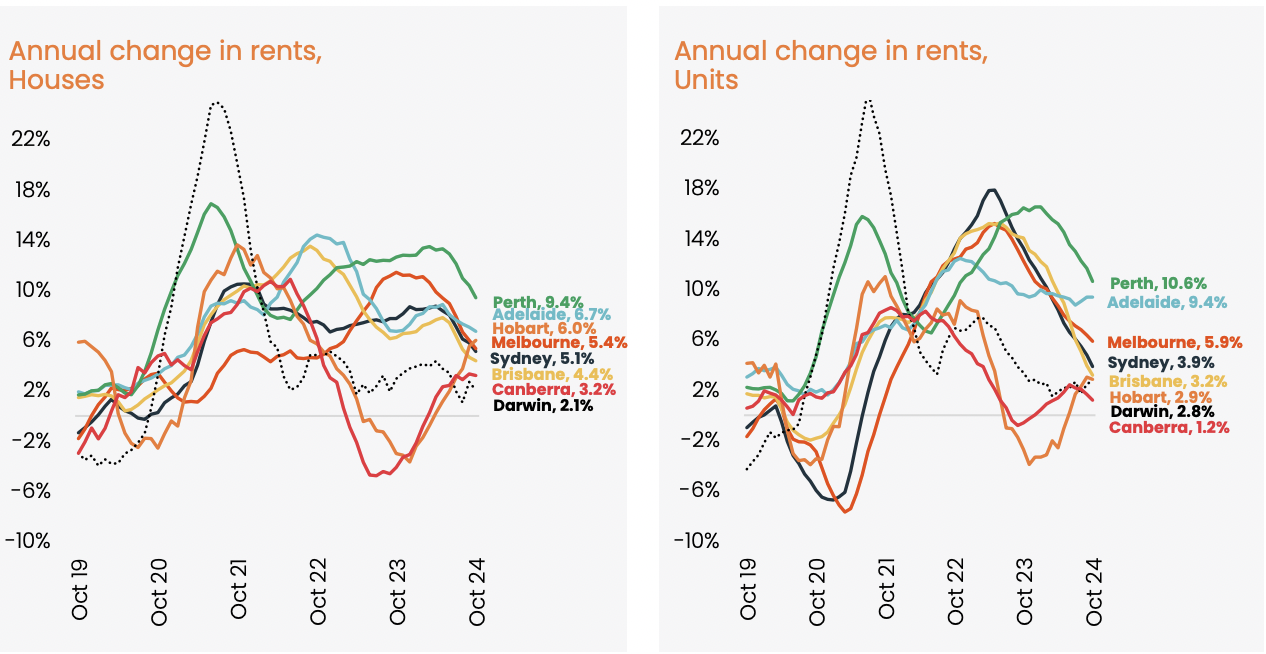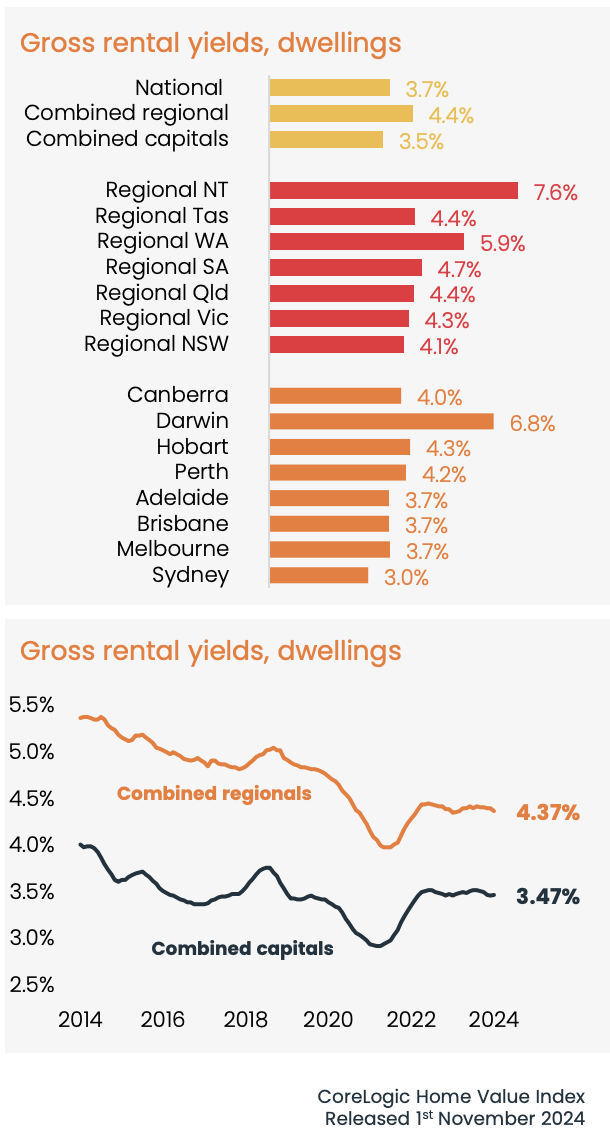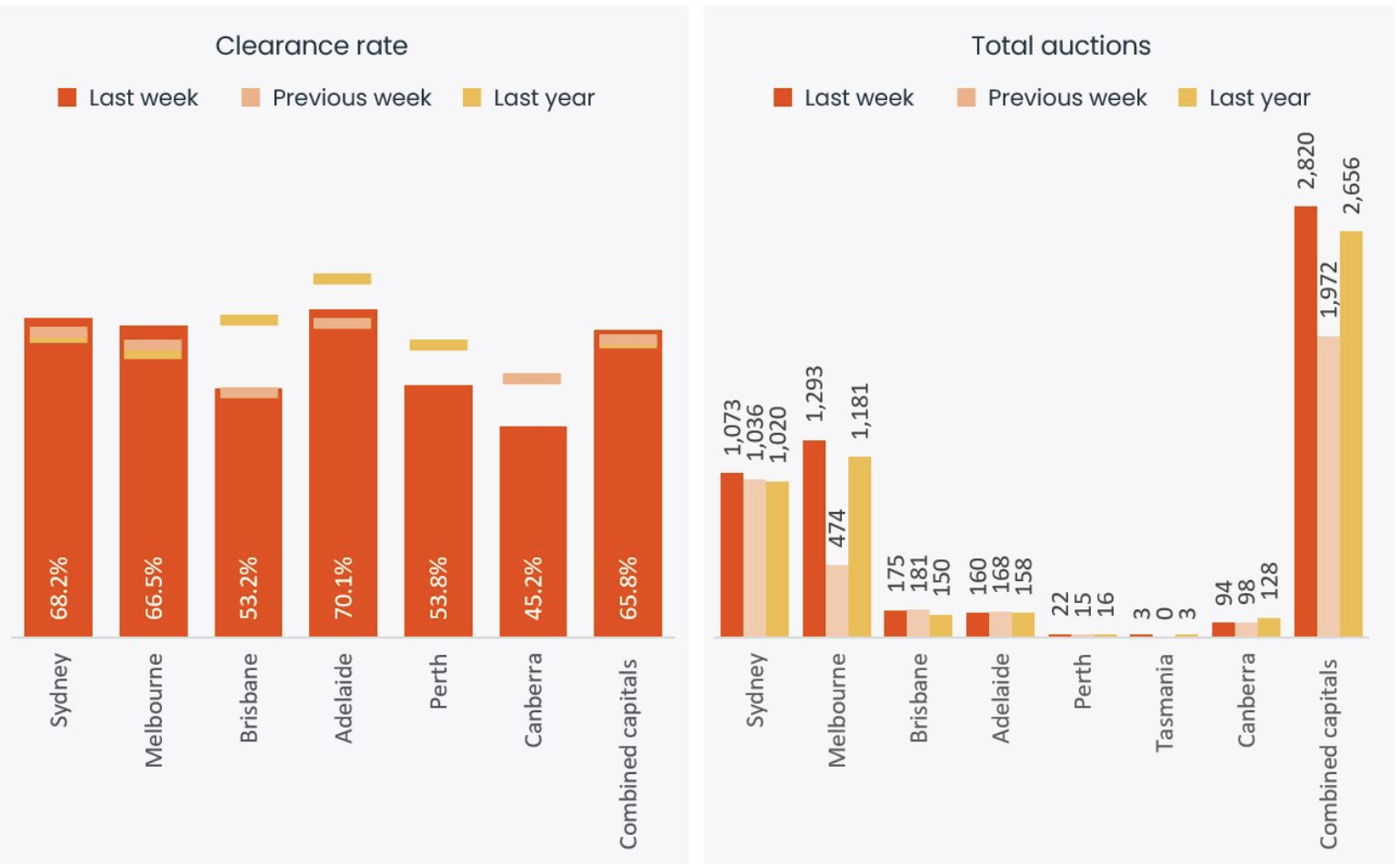CoreLogic Home Value Index report HVI November 2024 and Property Pulse Update.
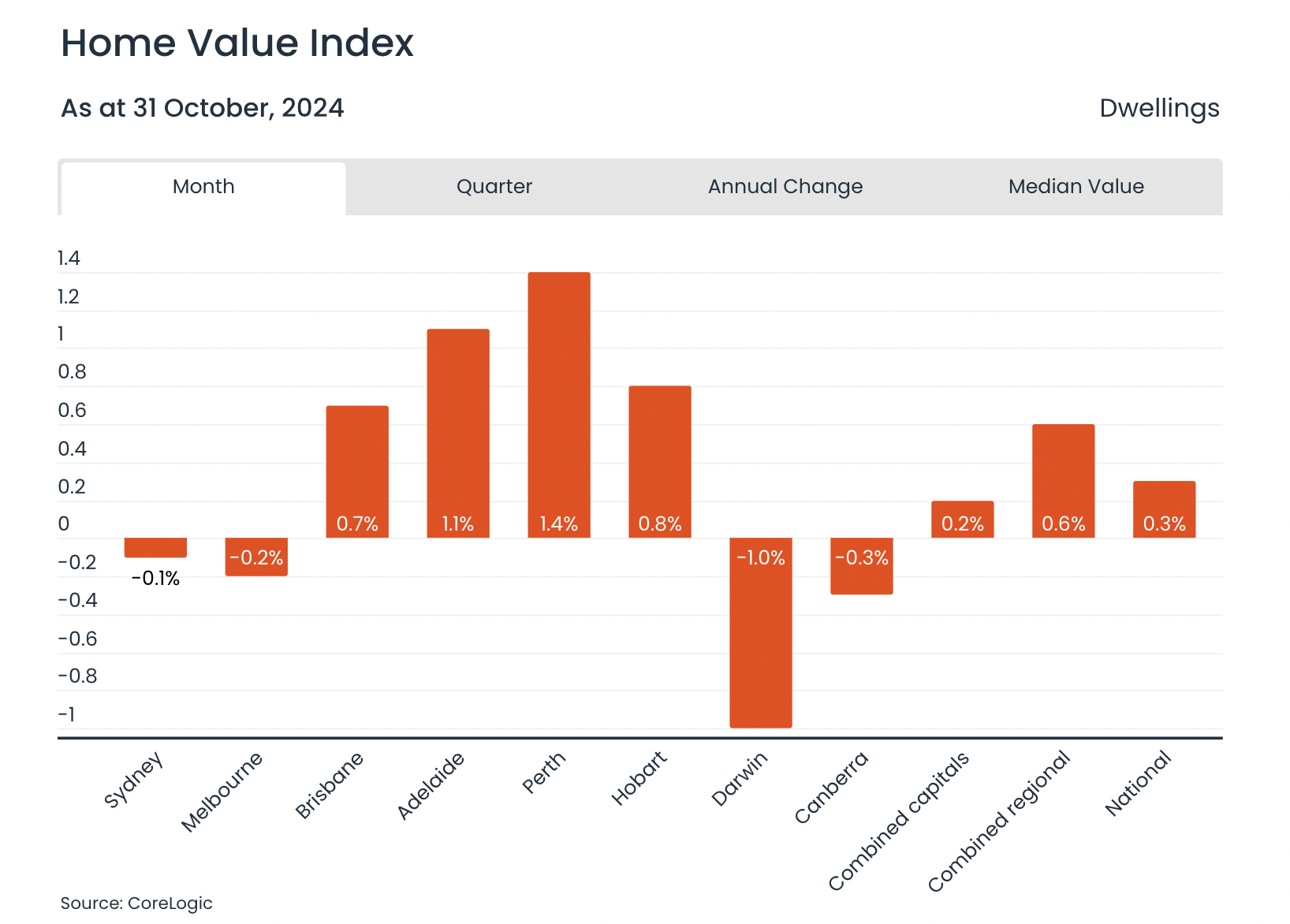
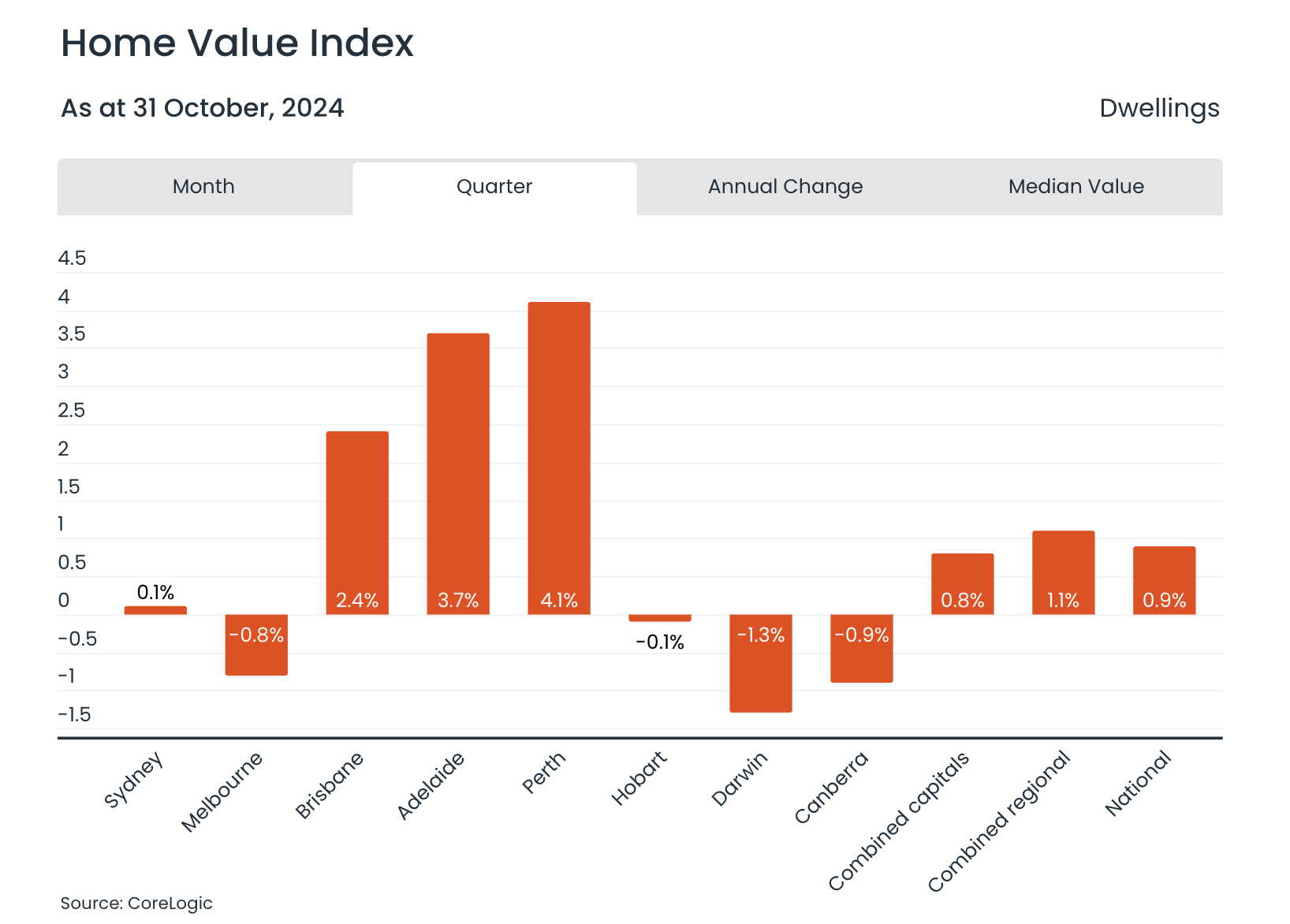
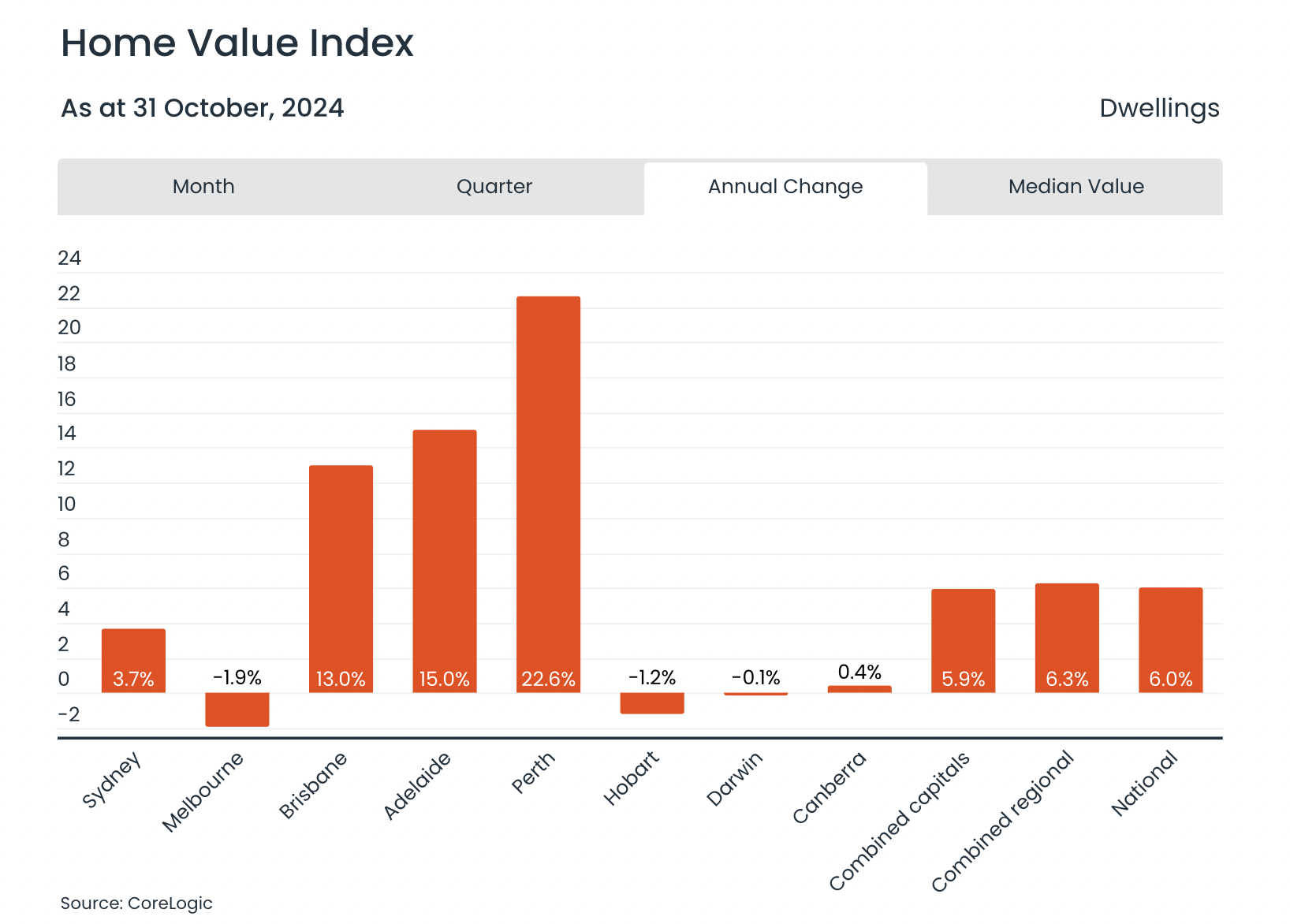

CoreLogic Home Value Index Report November 2024: Sydney home values slip in October as the national market cooldown continues.
Monthly Home Value Index Changes are as follows:
Sydney -0.1% REG NSW +0.5
Melbourne -0.2%, REG VIC -0.2%
Brisbane +0.7%, REG QLD +0.8%
Adelaide +1.1%, REG SA +1.3%
Perth +1.4%, REG WA +1.4%
Hobart +0.8%, REG TAS +0.7%
Darwin -0.1%,
Canberra -0.3%
Combines Capitals +0.2%, Combines REG +0.6%, National +0.3%
Sydney home values fell by 0.1% in October, marking the first monthly decline since January 2023. This follows a significant drop of 12.4% from February 2022 to January 2023. The decline has affected chiefly the priciest areas, with upper quartile house values decreasing by 0.6% this month and 1.1% over the last three months. Meanwhile, lower quartile house and unit values increased by 0.5% in October.
CoreLogic's research director, Tim Lawless, says that more affordable homes consistently perform better in the capital cities.
“A combination of less borrowing capacity and broader affordability challenges, as well as a higher-than-average share of investors and first home buyers in the market is the most likely explanation for stronger conditions across the lower value cohorts of the market.
“The past three months has seen the lowest quartile either record a higher growth rate or smaller decline relative to the upper quartile or broad middle of the market across every capital city except Canberra.”
Tim Lawless: Executive, Research Director, Asia-Pacific
Home values are growing more slowly, and the number of homes for sale has increased. As of October 27th, advertised listings have been up 12.7% since winter across the major capitals, with Perth seeing the most significant rise at 20.6%, though it started at a shallow level.
“Total listings are now 13.2% above the previous five-year average in Sydney and 13.0% higher in Melbourne,” Mr. Lawless said, helping to explain the weaker conditions in these markets as buyers benefit from more choice and less urgency in their decision making.
“Despite the rise in listings across the mid-sized capitals, Perth, Adelaide, and Brisbane are still seeing advertised stock levels more than -20% below the five-year average for this time of the year. These markets remain well and truly in favour of sellers, although the balance is starting to gradually improve.”
Home sales are declining even as more properties are listed. In the three months ending in October, sales in capital cities dropped by 7.5% compared to the previous three months and were 1.6% lower than last year. With more homes for sale and fewer buyers, it's becoming less easy to sell. Auction clearance rates remained below 60% for most of October, and private sale trends show a slight increase in the time homes are on the market, particularly in cities with high inventory.
Rental Movements
National rents increased by 0.2% in October, showing a slight recovery from slower growth in the last three months, but this is less than a third of the 0.7% rise seen in October over the past three years. Yearly rental growth has fallen to 5.8%, the lowest since April 2021. This slowdown in rental growth benefits inflation, as rents are a significant part of the Consumer Price Index (CPI). The yearly change in rents within the CPI has decreased, falling to 6.7% in the September quarter from a high of 7.8% earlier this year. Commonwealth Rental Assistance (CRA) has likely impacted rent growth, but its effect for the September quarter was minimal since the increase occurred late in the month. Weaker trends in the unit sector have also slowed rental growth, with rents declining in Sydney (-0.6%), Melbourne (-0.4%), Brisbane (-0.3%), Hobart (-0.6%), and Canberra (-1.5%) over the three months to October 24.
Yields
As rental growth slows, rental yields are decreasing. In October, the gross yield for all capital city homes was 3.47%, down from 3.52% in May and below the pre-pandemic average of 3.9%. Investing in housing is still popular, even with lower yields. Many investors face higher holding costs due to mortgage rates rising by about 3.4 percentage points since the pandemic and increased maintenance costs. Nevertheless, investors are driving a rise in mortgage activity, with lending values up 34.2% in the last year, more than double the 16.8% increase for owner-occupiers.
Auction Clearance Rates
Last week, there were 2,820 auctions, the second-highest number this spring and the fifth-highest in 2024. The preliminary clearance rate was 65.8%, up 2.4 points from the previous week but slightly below the spring average of 67.1%. Melbourne had the most auctions, with 1,293 homes, the third-highest this spring. The success rate for auctions was 66.5%, up from 62.4% last week and in line with the spring average of 66.4%.
The Expatriate always tries to make sure all information is accurate. However, when reading our website, please always consider our Disclaimer policy.



